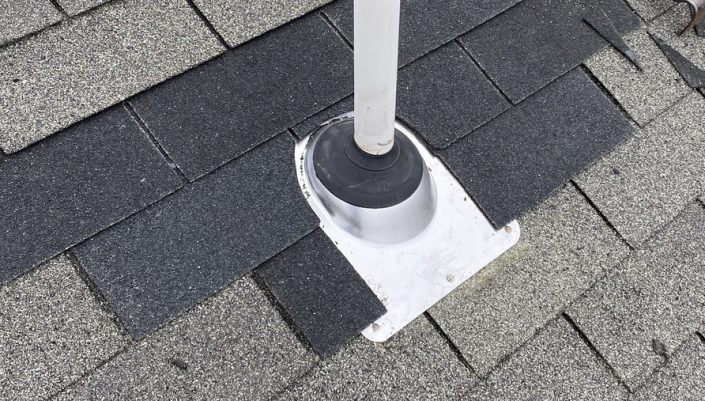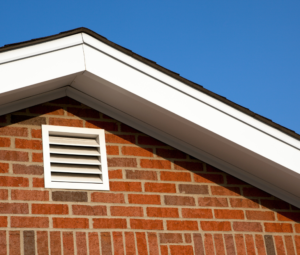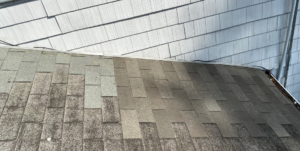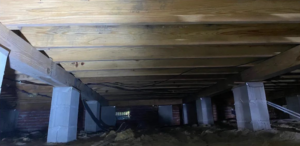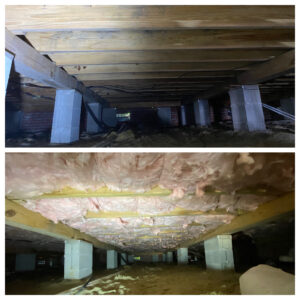Have you ever gone to your attic during the summer and instantly been overwhelmed by the scorching air in your attic? Are you tired of the extreme monthly energy bills caused by your air conditioning working its best to keep your house at a comfortable temperature? A hot attic may be at the top of the list for uncomfortable temperatures throughout the rest of your home. In this blog post, we will explore how to cool a hot attic during the summer so you can enjoy a more comfortable living space and save on energy costs.
Understanding the Heat in Your Attic
Let’s dive deeper into why your attic feels like a sauna in the summertime. Picture this: the sun’s beating on top of your house all day. Your roof is taking the brunt of it, soaking up all that heat. Now, if your attic isn’t correctly set up to deal with this warmth influx, it becomes a giant oven sitting right above your living spaces. It’s not just about the discomfort, though that’s a big part. This trapped heat can start affecting the structure of your home and even your health if you’re spending any significant amount of time up there.
So, what exactly happens up there when the temperatures rise? Without getting too into the science details, your attic starts to collect heat from the direct sunlight on your roof and the air outside. If there’s no way for this heat to escape or be blocked effectively, it starts to seep through the attic floor and into the rest of your house. This is why, even with your AC cranked up, you might wonder why it’s still so hot inside.
You might be thinking, “But wait, isn’t heat supposed to rise?” And you’re right; it does. However, when your attic is hotter than the outdoor temperature, that heat has nowhere to go but into your living spaces. This is especially true if your attic lacks proper insulation and ventilation, two critical components we’ll get into. The key takeaway is that the heat in your attic isn’t just an attic problem; it’s a whole-house problem. Understanding this chain reaction sets us to explore practical solutions to keep your attic, and consequently your home, cooler during those relentless summer months.
The Power of Proper Insulation
Alright, let’s get into the nitty-gritty of insulation, shall we? Think of insulation like your attic’s superhero cape. It’s not just about keeping warm air in during the colder months; it’s equally about reflecting that scorching summer heat away from your living spaces. When your attic is adequately insulated, you’ve put up an invisible shield that says, “Not today, heat!”
Insulation works in a pretty straightforward way, but its impact is anything but simple. By creating this barrier, the relentless heat trying to invade your home from the roof is significantly reduced. This means that the cool air inside your house, the air you’re paying to chill, isn’t constantly being warred against by incoming heat. The result? Your air conditioner doesn’t have to work overtime, which can lead to some pretty sweet savings on your energy bills.
You might wonder, “How do I know if my attic is properly insulated?” That’s a great question! The answer can vary, but a good rule of thumb is to check the type and thickness of the insulation you currently have. Different materials offer different resistance levels to heat flow, known as R-values. Generally, the higher the R-value, the better the insulation’s ability to resist heat transfer. It might be time for an upgrade if you see bare spots or your insulation looks thin and worn.
The beauty of investing in quality insulation is that it’s a gift that keeps on giving. Not only does it help keep your attic—and, by extension, your home—cooler in the summer, but it also plays a crucial role in maintaining warmth during the winter. Plus, it can increase your home’s overall energy efficiency, making it a win-win scenario no matter how you slice it.
So, while insulation might not be the most glamorous topic out there, its role in keeping your attic cool during those blisteringly hot summer days cannot be overstated. It’s a fundamental step in creating a more comfortable, energy-efficient home.
Ventilation - Your Attic's Best Friend
Let’s chat about ventilation, a real game-changer for your attic’s climate control. Imagine ventilation as the excellent, outgoing friend who can lighten up a stuffy room. In the realm of your attic, proper ventilation plays a pivotal role in escorting that unwanted hot air right out the door, making space for cooler, fresher air to take its place. This isn’t just about keeping the air moving; it’s about making sure that scorching summer heat doesn’t decide to settle in and crash at your place.
Now, how does this magic happen? Through a dynamic duo (or trio) of vents and fans designed to promote a breezy flow throughout your attic space. Ridge vents sit discreetly along the peak of your roof, acting as the escape hatch for hot air, while soffit vents under the eaves invite cool air in. But we can’t forget about attic fans – these power players work tirelessly to pull hot air out, ensuring your attic doesn’t turn into a sauna.
But here’s the cool part (pun intended)—when these systems work in harmony, they create a loop of air movement that constantly refreshes the atmosphere in your attic. This means the sweltering heat has less chance to penetrate your living spaces below, making your home more comfortable and easing the burden on your air conditioning unit. It’s like giving your AC a high-five for not having to work so hard.
So, while it might seem like a small thing, ensuring your attic is well-ventilated can make a huge difference in how you experience those hot summer days at home. It’s a straightforward fix that packs a punch in making your living environment more pleasant and energy-efficient. Think of it as a breath of fresh air for your home’s uppermost level.

